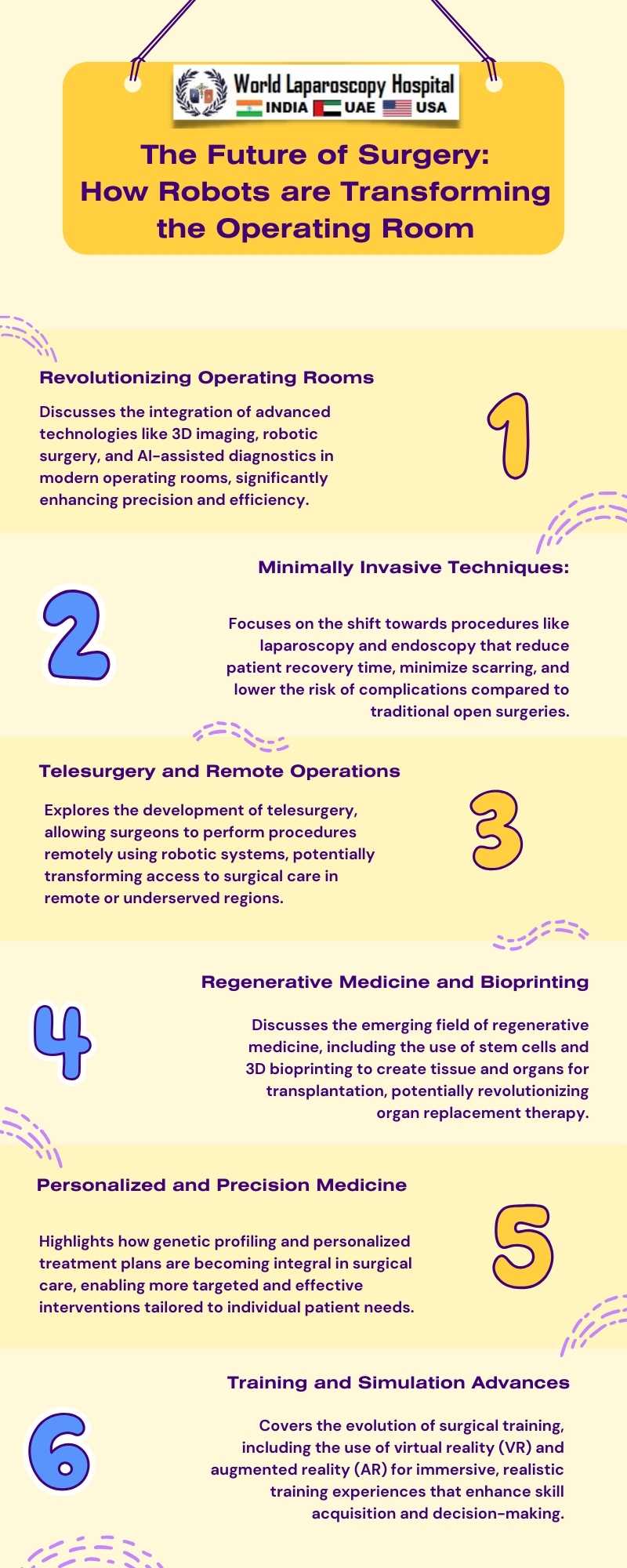Introduction
The integration of robots in surgical procedures marks a significant milestone in the evolution of medical technology. This integration promises to enhance the precision, efficiency, and outcomes of surgeries. As we stand at the brink of this technological revolution, it is crucial to understand the scope and impact of robotic surgery.

Historical Perspective
The concept of robotic surgery dates back to the late 20th century when the first robotic systems were introduced to assist in surgical procedures. Initially, these systems were rudimentary, offering basic assistance. However, over the years, advancements in technology have led to the development of sophisticated robotic systems capable of performing complex surgeries with high precision.
Technological Advancements
The core of robotic surgery lies in its technological prowess. Modern surgical robots, such as the da Vinci Surgical System, are equipped with high-definition 3D vision systems and robotic arms that mimic the movement of the surgeon's hands, but with greater precision and control. These systems allow for minimally invasive procedures, reducing the size of incisions, minimizing blood loss, and speeding up patient recovery.
Impact on Surgical Procedures
Robotic surgery has revolutionized various surgical fields, including cardiothoracic, gynecological, urological, and neurosurgery. The precision of robotic systems has made it possible to perform complex procedures with enhanced accuracy, reducing the risks associated with traditional open surgeries. For instance, in procedures like prostatectomies or hysterectomies, robotic systems have significantly improved patient outcomes and reduced postoperative complications.
Surgeon Training and Skills
The advent of robotic surgery has also necessitated a paradigm shift in surgical training. Surgeons must now acquire specialized training to operate these sophisticated systems. This training focuses on mastering the control of robotic arms and interpreting the surgical field through a 3D monitor, skills that differ significantly from those used in traditional surgery.
Ethical and Economic Considerations
The introduction of robotic surgery raises important ethical and economic questions. The high cost of robotic systems and their maintenance can lead to increased healthcare costs, raising concerns about the accessibility of such advanced treatments. Additionally, there are ethical considerations regarding the learning curve associated with robotic surgery and the implications for patient safety during this phase.
Future Directions
The future of robotic surgery is poised for further growth with advancements in artificial intelligence (AI) and machine learning. These technologies could lead to more autonomous robotic systems, capable of assisting surgeons in real-time decision-making and even performing certain surgical tasks independently. Furthermore, the integration of virtual reality (VR) in training could enhance the surgeon's skills and adaptability to robotic systems.
Conclusion
Robotic surgery represents a groundbreaking development in medical technology, offering numerous benefits in terms of surgical precision, patient recovery, and overall outcomes. However, it also brings challenges in terms of training, ethical considerations, and economic impact. As technology continues to advance, the future of surgery looks promising, with robots playing an increasingly vital role in the operating room. The ongoing evolution of this field will undoubtedly continue to reshape the landscape of surgical procedures, enhancing the capabilities of surgeons and improving patient care.